In another article, I explained the goal of every sensible fat loss diet should be twofold: Preserve muscle and burn body fat.
Sadly, so much emphasis is put on fat loss that preserving muscle and strength is too often neglected which is a mistake because maintaining muscle and strength has a plethora of benefits beyond looking good in your birthday suit.
For starters, preserving your muscle as you get leaner will preserve your metabolic rate. There’s also evidence to suggest the more muscle you lose during a diet, the higher your risk of weight regain due to an increase in appetite. Aa
If that wasn’t enough, losing muscle and strength also increases your risk of injury, fractures and uh…your risk of death. In one study, researchers found low and declining grip strength over a 40-year period was associated with an increased risk of death. 1 These findings were supported by a 2018 systematic review and meta-analysis that included ~2 million men and women. The results showed “higher levels of handgrip strength were associated with a reduced risk of all-cause mortality.” 2 Similarly, Sedlmeier and colleagues looked at data from ~16,000 individuals aged 20 to 93 years; individuals with more muscle had a lower risk of mortality. 3
Skeletal muscle is also an independent marker of metabolic health, and low muscle mass and strength is linked to an increased risk of metabolic disease. 4
And much, much more as the image below illustrates.
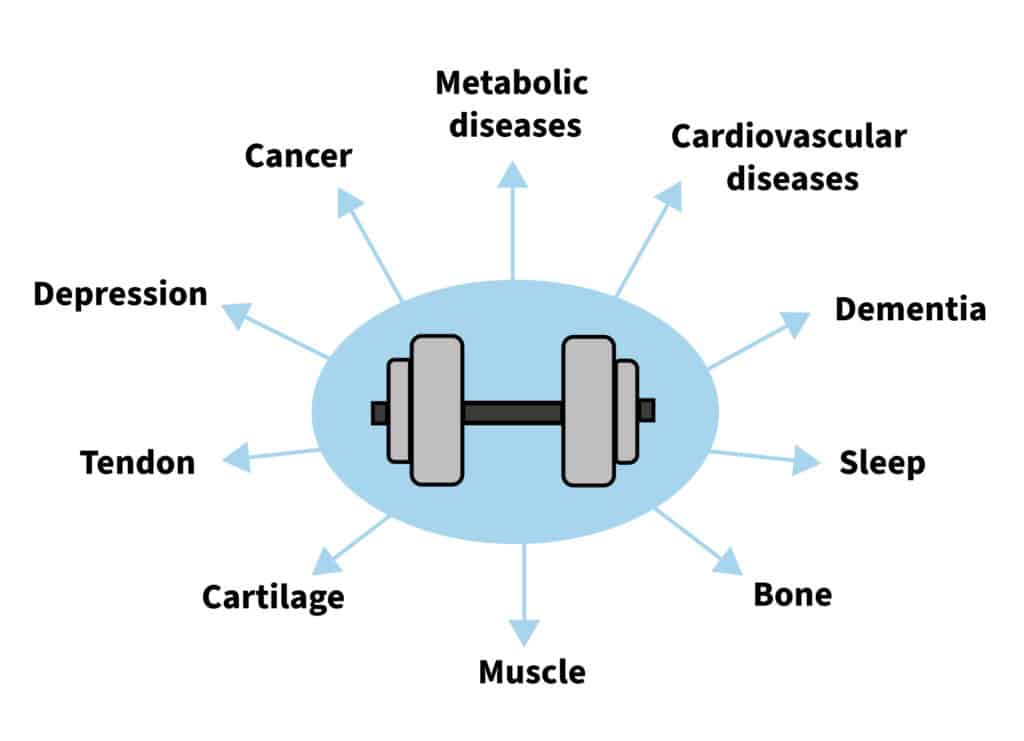
So saying “maintaining your muscle and strength is important” would be like saying “oxygen is important.” Yeah, no shit. Have you ever gone without oxygen? No, neither have I but I imagine the entire experience sucks. Not dissimilar to how much your life would suck if you lost muscle and strength.
Fortunately, I wrote this article on how you can prevent muscle and strength loss as you diet and get leaner.
Let’s get started, shall we?
Table of contents
- Set an appropriate deficit
- Eat enough protein
- Perform resistance training
- Stop with the excessive cardio
1. Set an Appropriate Deficit
As tempting as it is to start slashing calories like your Jon Snow fighting a bunch of dead popsicles, the goal should be to eat as much as you can while losing fat. Because remember, fat loss isn’t the only goal––you also want to maintain as much muscle and strength as possible during a fat loss diet.
Thus, it’s crucial to set an appropriate deficit: Just enough to coax fat loss, but not so aggressive you risk muscle and strength loss, hinder training performance, and spend your waking hours feeling like a supersized bag of rat turds.
How big should the deficit be?
Your starting body fat percentage will dictate the size of the deficit. Body fat has a muscle-sparing effect, which is just a fancy way of saying the more body fat you have, the faster you can lose fat without risking muscle and strength loss. Conversely, the leaner you are, the slower the rate of loss should be.
With this in mind, aim to lose between 0.5–1% of total bodyweight per week. If you have a lot of fat to lose, aim for the higher end. And if you don’t have that much fat to lose, aim for the lower end.
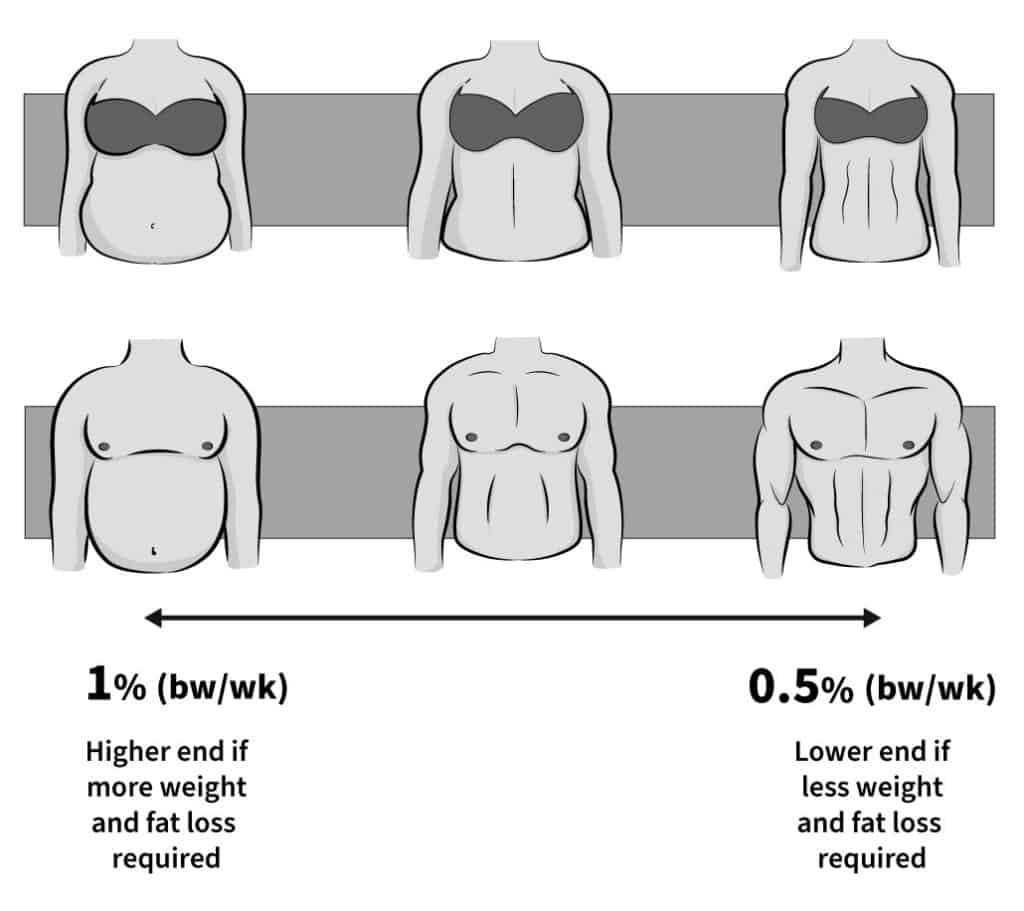
By extension, the rate of loss should scale with body fat levels during the diet. Someone with a lot of fat to lose may start the diet aiming to lose 1% of total bodyweight per week, gradually decreasing the rate of loss as they get leaner.
Alright, so you’ve understood the importance of setting an appropriate calorie deficit to maximise muscle and strength retention. But if it were as simple as cutting calories and sitting around for a few months, well, we’d all be lean. Setting an appropriate deficit is only the first part of the equation. Next, let’s look at the importance of protein.
2. Eat Enough Protein
So you’ve started eating in a deficit and kick-started the fat burning process. But don’t start celebrating too soon because this shit’s a bit more complicated than that.
A calorie deficit reduces muscle protein synthesis (MPS) and increases muscle protein breakdown (MPB), resulting in a negative protein balance, increasing the risk of muscle loss. 5 Adequate protein intake––far beyond the RDA––can help mitigate this.
For example, a study published way back in the 1980s on experienced weightlifters found a high-protein diet consisting of 1.6g/kg (~0.7g/lb) was better at keeping the body out of negative protein balance compared to a diet consisting of 0.8g/kg (~0.3g/lb) of protein during a period of energy restriction. 6
A decade later, Mettler et al. reported similar findings: Lean mass was better preserved with 2.3g/kg (~1g/lb) of protein compared to 1g/kg (~0.5g/lb) after 14 days of a 40% calorie deficit in resistance-trained men. 7
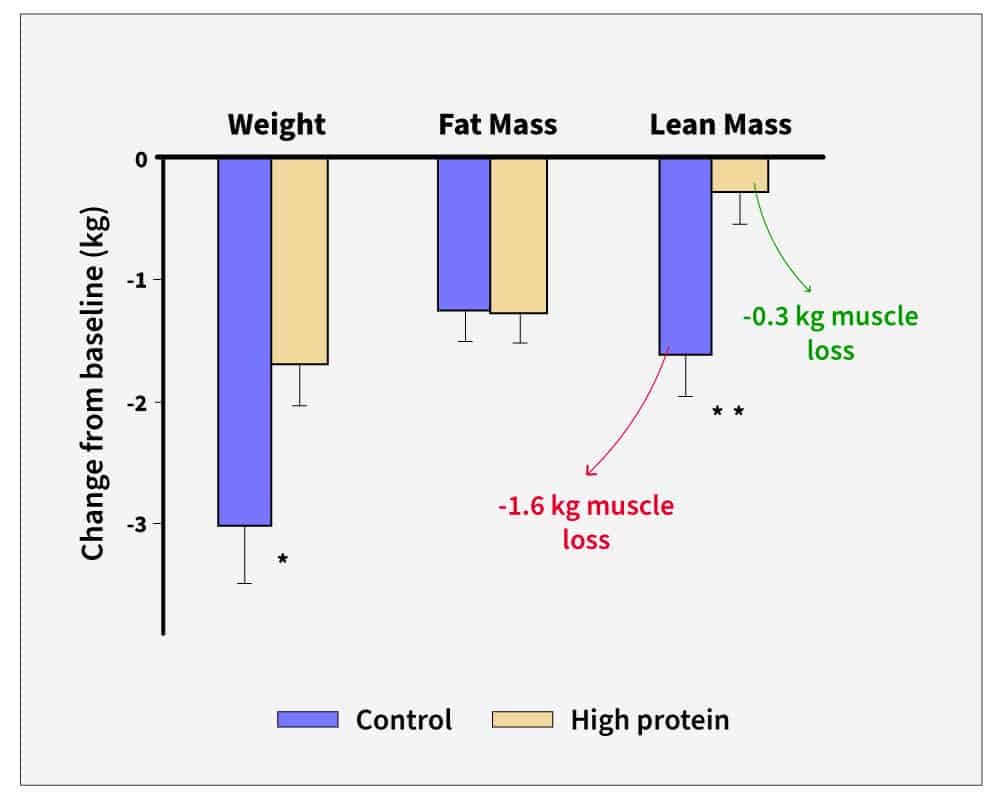
More recently, Helms and colleagues conducted a systematic review to investigate protein requirements in lean resistance-trained athletes during caloric restriction, suggesting a range of 1.8–2.7g of protein/kg of body weight (or 0.8–1.2g/lb), noting that: 8
Athletes with a lower body fat percentage, or a primary goal of maintaining maximal FFM should aim toward the higher end of this range. Those who are not as lean, or who are concerned primarily with strength and performance versus maintenance of FFM can safely aim for the lower end of this recommendation.
Quick side note: People often cite this 2018 study to support the idea that more than 1.6g/kg protein isn’t necessary. However, this study looked at protein intakes in participants in energy balance, not a deficit. Even the researchers pointed this out: “Our meta-analyses also only included studies with participants that were at or above their energy requirements, which may have omitted the significant impact protein has during periods of weight loss with RET.“
Further, there was an error range of up to 2.2g/kg (~1g/lb), which lines up with the protein recommendation I gave in this article.
So yes, if you’re eating at maintenance or in a surplus, aiming for about ~0.7g/lb would be enough protein. But if you’re in a deficit, especially the leaner you start, aiming for slightly more protein is never a bad idea. Not only can it help increase satiety, but there’s also evidence suggesting higher protein intakes can lead to less stress and fatigue and increased diet satisfaction. 9
On the whole, it’s safe to assume anywhere between 0.7–1.2g/lb (~1.5–2.7g/kg) is enough protein to preserve muscle during a deficit. For most people, aiming for somewhere in the middle of this range (1g/lb or 2.2g/kg) will suffice. Of course, if you prefer more protein, there’s no harm in aiming for the higher end. Conversely, if you prefer more carbs and fats in the diet, then aim for the lower end.
3. Perform Resistance Training
One of the questions I get asked is whether muscle can be maintained without resistance training. Unfortunately, no.
You need to give your body a reason to maintain muscle, and without the stimulus of resistance training, the risk of muscle loss increases. Yes, even if you’re eating a high protein diet.
To help illustrate just how important resistance training is, let’s look at a study that explored how three different levels of protein intake affected muscle loss in a 40% deficit. 10
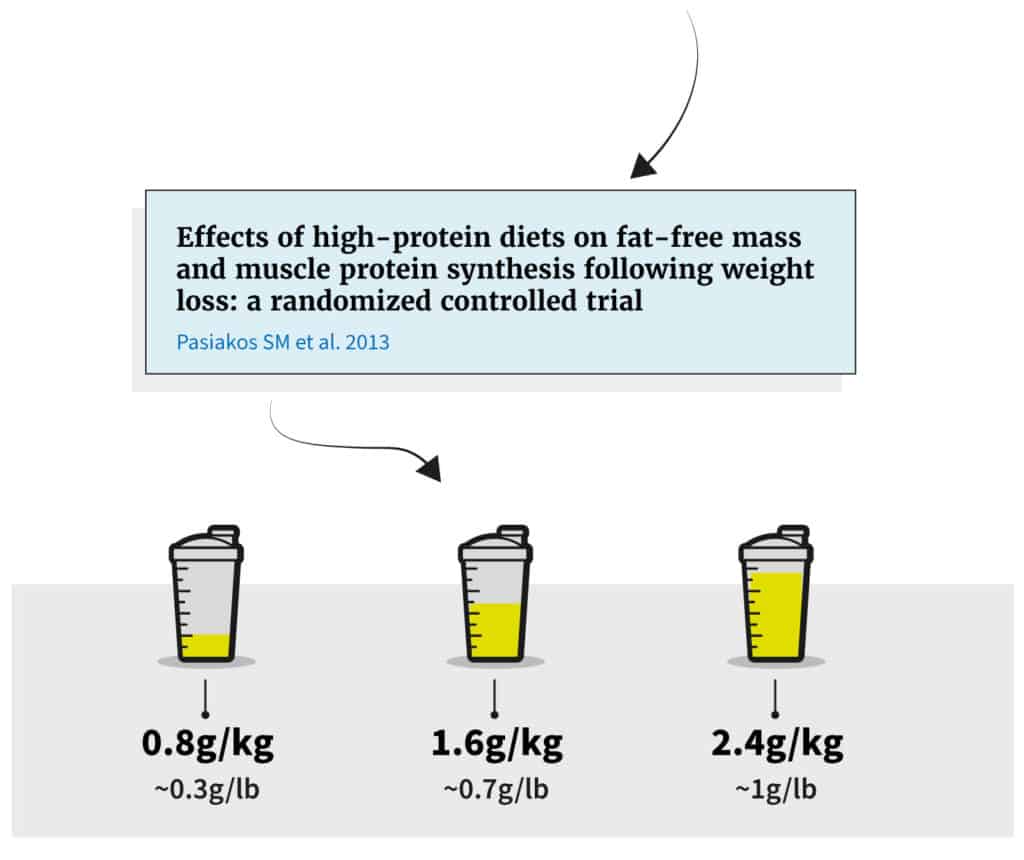
Participants performed low-to-moderate intensity steady-state cardio every day. And while the participants were resistance training (3x/wk), this was only done to preserve pre-study muscular fitness levels. As such, the type of training performed consisted of very low volume and intensity (one single-joint movement per major muscle group for 3 sets of 15 reps) and there was no progression implemented. At the end of the study, all participants lost muscle mass.
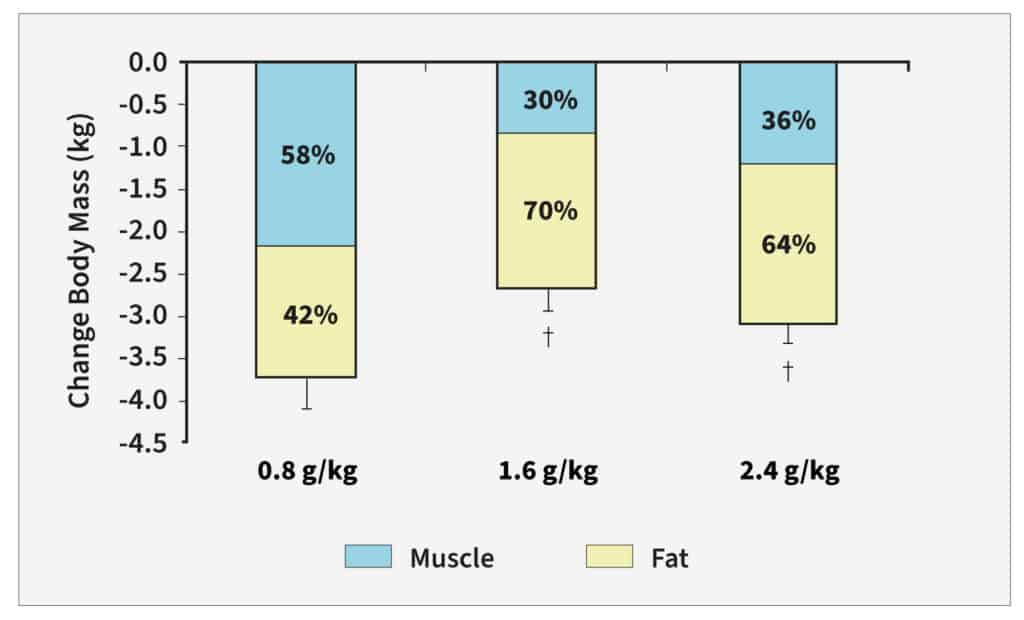
Similar findings were reported by a recent study. 11
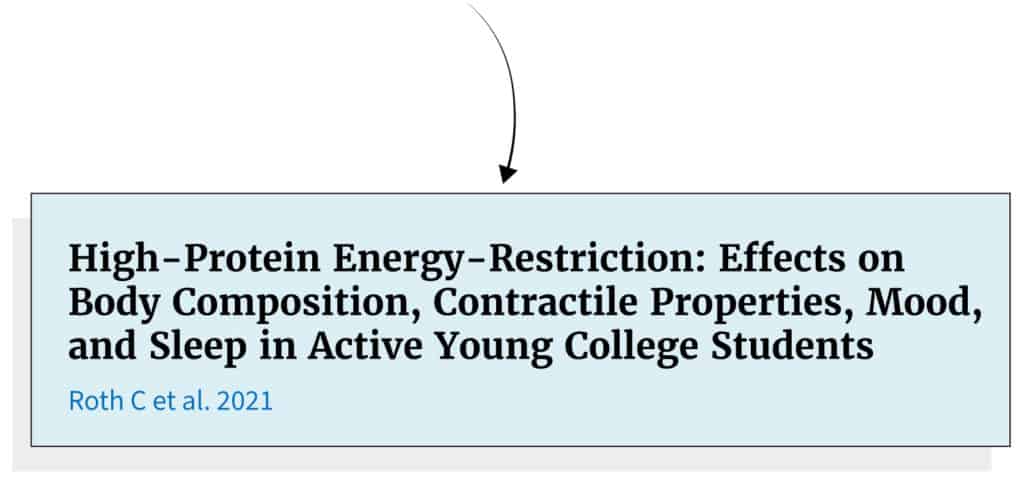
28 recreationally active men (generally team sports) were pair-matched for relative muscle mass and assigned to one of two diet groups for six weeks. Both groups consumed a high protein diet––2.8g/kg (1.2g/lb)––but one group ate in a deficit while the other group ate at maintenance.
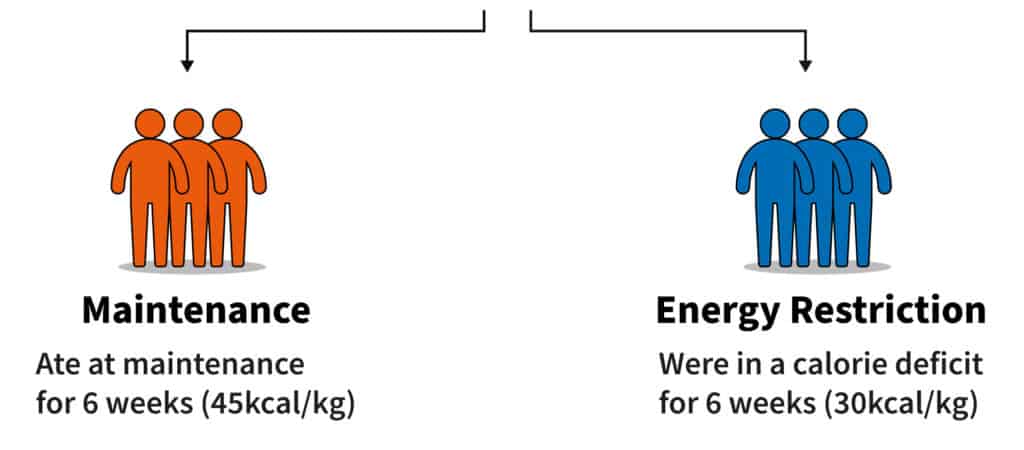
The energy restriction group lost a statistically significant 0.85 kg (1.87 lbs) of body cell mass over the six weeks. Meanwhile, the maintenance group maintained their lean mass. Aa
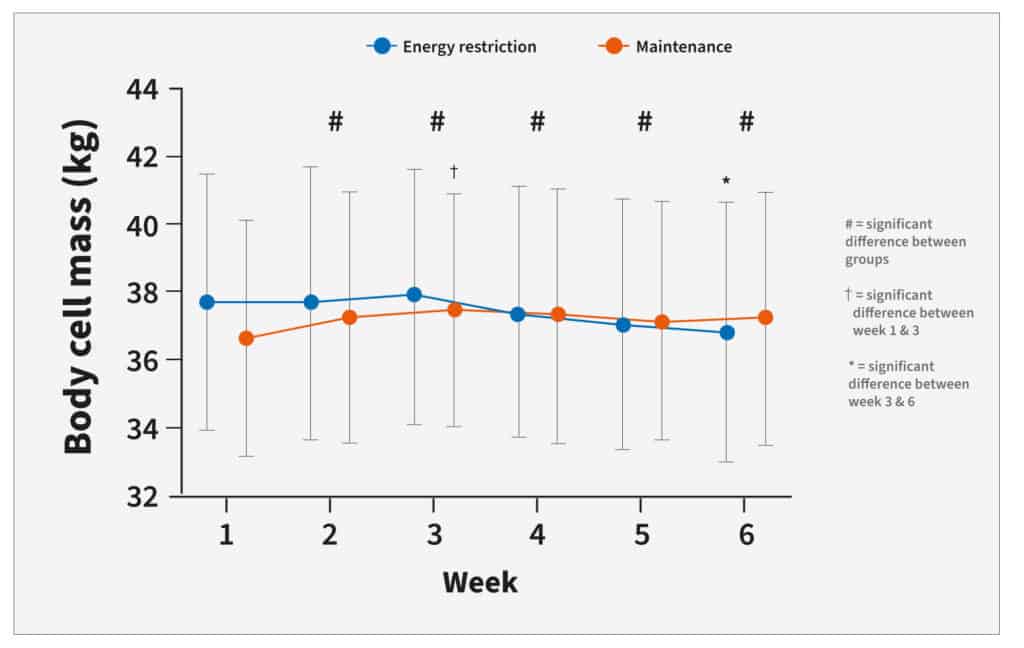
Contrast this to studies that have implemented progressive resistance training during a deficit. As one example, Garthe and colleagues compared changes in body composition during fast or slow weight loss in elite athletes consuming ~1.6g/ kg (0.7g/lb) of protein and resistance training 4x/week. 12
The slow group gained a small amount of muscle. Meanwhile, the fast group retained muscle despite being in a pretty aggressive deficit.
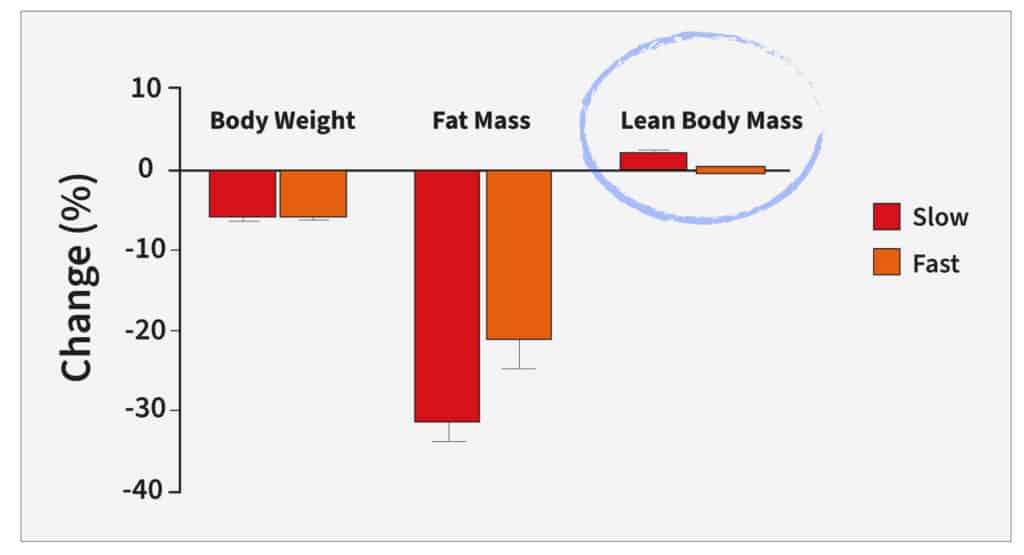
For this reason, how you train to build muscle is exactly how you should train to maintain muscle. In practical terms, this means two things.
First, lift a load that’s sufficiently challenging enough to signal to your body it should hold onto muscle mass. This doesn’t mean lifting the heaviest weight possible until you can’t do another rep. Rather, you want to lift a weight anywhere between ~1-4 reps before you hit mechanical failure––where you can’t complete another rep with good form. 13 14
So for example, if you can lift a weight for a maximum of 10 reps, anywhere between 6-9 reps will be enough intensity.

Second, continue implementing progressive tension overload. In other words, continue to add weight or do more reps at a given weight for as long as you can.
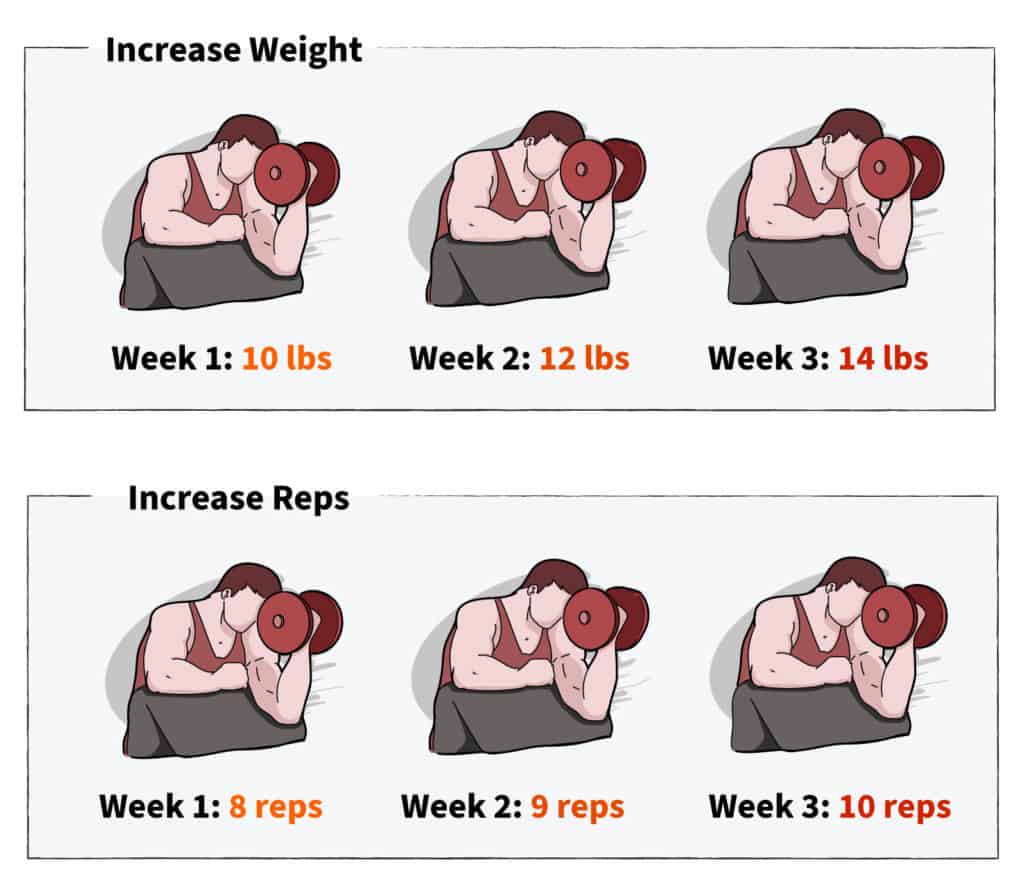
Now, as you start to get leaner, energy levels can drop so you’ll need to adjust your training accordingly. In this case, you should reduce training volume while aiming to maintain training intensity (i.e., how much weight you’re lifting).
While there are a number of to approach this, my recommendation is to reduce the number of sets you’re doing per body part per week. For instance, if you were doing 15 sets per muscle group per week during the early part of your diet, you could reduce this to 10 sets per muscle group per week as you get deeper into the deficit and energy levels drop.
And for those of you freaking out about reducing your training volume, there’s nothing to worry about. Research has shown even large reductions in training volume can maintain muscle mass as long as you maintain training intensity. 15 16
What about high reps with low weights for “toning”?
As I explained, you need to give your body an adequate stimulus that tells it there’s a need to hold onto muscle. If you remove this stimulus you risk muscle loss. So the idea your training should change during a fat loss diet is silly at best and detrimental at worst.
To be clear, this doesn’t mean high rep training can’t be performed. Research has shown both high and low reps can build muscle. 17 However, for low-load, high-rep training to be effective, each set needs to be pushed to complete failure. 18
But this presents its own problem: High rep training with minimal rest periods can be really taxing, and in a calorie deficit, doing too much high rep training can negatively impact training performance and recovery. 19
Moreover, there’s an inherent level of discomfort when training with high reps. 20 And most people aren’t going to be able to push themselves at an intensity for high-rep training to be productive. In fact, when higher reps are performed, people confuse discomfort with effort causing them to stop the set before they maximally stimulate the muscles. 21
So how many reps should you do?
The topic of reps is an article unto itself. But in brief: I recommend aiming for between 3-15 reps, with the majority of training occurring between 6-12 reps.
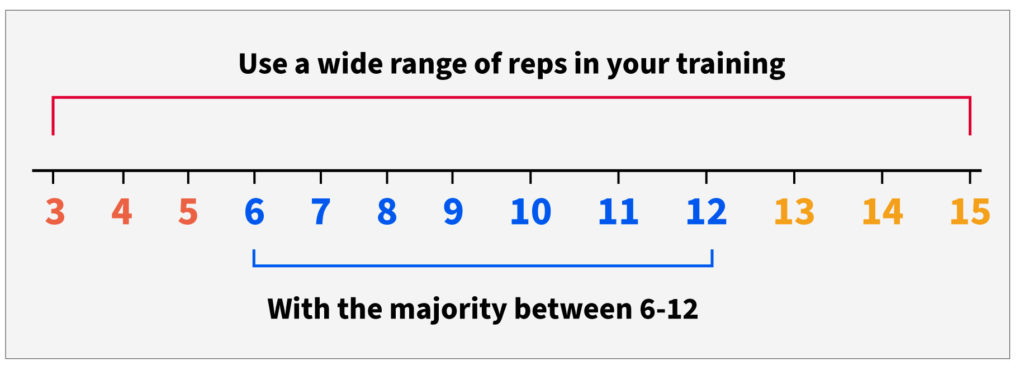
Not because there’s something special about the rep ranges above. As mentioned earlier, all rep ranges can build muscle as long as you’re training with sufficient intensity. However, lower reps mean lifting heavy weights really close to your maximum which can increase the risk of injury, and generally leave you feeling more “beat up”. On the other hand, going too high in reps can increase fatigue which can impact recovery and performance. As such, keeping the majority of your training between 6-12 reps allows for more productive training because you avoid the aforementioned issues, while still lifting loads that provide enough mechanical tension on the muscles.
How you program this will be up to you, but I like to have “strength” days and “hypertrophy” days as this allows you to train through a full spectrum of reps over the course of the training week.
Here are two examples using a 3- and 4-day program.
3-day:
- Monday: Full body strength – between 5-8 reps
- Wednesday: Upper body hypertrophy – between 8-15 reps (lower end for compound movements; higher end for accessory/isolation movements)
- Friday: Lower body hypertrophy – between 8-15 reps (lower end for compound movements; higher end for accessory/isolation movements)
4-day:
- Monday: Upper body strength – between 5-8 reps (lower end for compound movements; higher end for accessory, isolation movements)
- Tuesday: Lower body strength – between 5-8 reps (lower end for compound movements; higher end for accessory, isolation movements)
- Thursday: Upper body hypertrophy – between 8-15 reps (lower end for compound movements; higher end for accessory, isolation movements)
- Friday: Lower body hypertrophy – between 8-15 reps (lower end for compound movements; higher end for accessory, isolation movements)
Need a training program?
4. Stop With the Excessive Cardio
If you’ve spent any length of time in the fitness space, you’ve undoubtedly come across people warning you about the dangers of combining cardio and resistance training due to something called the “interference effect”.
The interference effect states the adaptations that occur in response to endurance-based training are in direct opposition to the adaptations that occur in response to strength training and thus, create an “interference” in the body’s ability to gain muscle and strength.
But the truth is, the interference effect probably isn’t as scary as people make it out to be. For example, a recent meta-analysis found combining aerobic and strength training didn’t interfere with the development of maximal strength and muscle hypertrophy compared to strength training alone.
That said, it’s still a good idea to limit how much cardio you’re doing (sorry, cardio lovers). A calorie deficit is a recovery deficit. And a lack of recovery can have a knock-on effect on your strength training performance which could subsequently lead to muscle and strength loss.
So, if you want to absolutely maximise muscle and strength retention during a deficit, I’d recommend limiting cardio and putting the focus on your strength training.
For what it’s worth, I’ve worked with hundreds of clients over the years, and I can count on one hand the number of them who did cardio. They followed my philosophy of “eat for fat loss; train for muscle and strength” and were able to get lean just fine. And if you do want to do cardio, check out this article for how to make it work.
In Sum
- Maintaining muscle and strength is crucial as you lose fat. It’ll help you look better, preserve metabolic rate, and has a myriad of health and longevity benefits
- To optimise muscle and strength retention, aim to lose between 0.5–1% total body weight loss per week.
- A calorie deficit increases muscle protein breakdown and consuming adequate protein can help minimise this. 1g/lb (2.2g/kg) is a nice round number to aim for, but anywhere between 0.7g/lb–1.2g/lb (1.5g/kg–2.6g/kg) will suffice.
- You need to give your body a reason to maintain muscle, and without the stimulus of resistance training, the risk of muscle loss increases. Yes, even if you’re eating a high protein diet.
- The claim that cardio is harmful for muscle and strength retention is slightly overblown. But it’s still a good idea to limit how much cardio you’re doing to avoid impacting your ability to recover, which could in turn negatively affect your resistance training performance.
Thanks for reading. If you enjoyed this, you’d love Physiqonomics Weekly
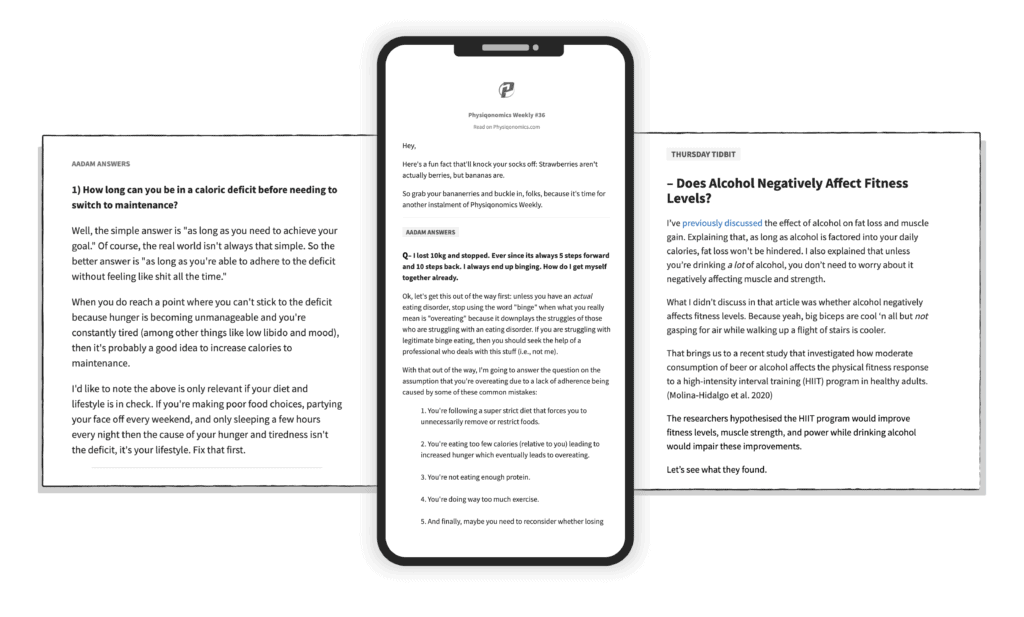
95% of my new content is only being sent out to my email list. One email every Thursday filled with actionable, evidence-based fitness advice to help you with your goals. If you enjoy and find value in the website content, you’ll love my emails. You can learn more and subscribe for free here.